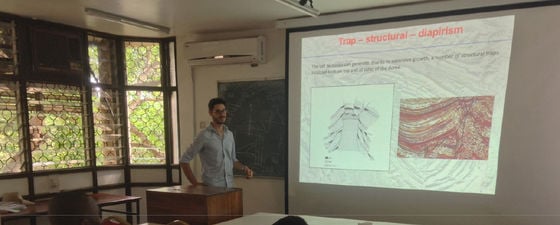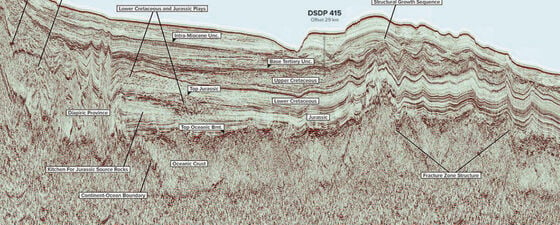A new working model for building equitable relationships in international academic partnerships.
Elphinstone Hall at the University of Aberdeen.
Building local content, also known as capacity building, is a key item on the agenda of many universities in nations with emerging economic growth, but successfully and quickly achieving it can be problematical. Economic growth is frequently triggered by extractive resource development, very often the discovery of hydrocarbons. This can give rise to a number of important concerns, including:
the need to avoid the ‘boom and bust’ scenario which results from over rapid development after hydrocarbon or other mineral discovery, concentrating instead on controlled economic growth based on the efficient and long-term exploitation of the resource;
while there may need to be some initial reliance on expertise from outside the country, the ultimate aim is to be independent of this;
educational establishments in an emerging economy may need to gain scientific and technical credibility and global recognition to ensure they have both the best teaching and teachers;
sufficient financial input is required to ensure there is an adequate academic resource to support national energy goals and requirements;
a realistic timeframe to attain specified economic goals has to be defined;
what does the general populace expect and is it realistic?
cultural considerations must be discussed and accounted for.
Catch-Up Tactics
The exploitation of mineral wealth requires a knowledge of earth science, preferably using local staff. However, geology and geophysics degree courses are often available at very few locations in developing countries, and may not focus on academic subjects associated with the exploration for and production of hydrocarbons. Even in universities where such degrees are well-established, with high quality students graduating, there is still a perceived local need to expand and enhance the skills portfolio.
Too often at the moment these issues are approached by the newly resource-rich country through a series of ‘catch-up’ tactics which usually involve paying for students to study overseas, or by flying overseas lecturers in so they can enhance the existing curriculum by teaching short additional courses. Very nice for the small number of subsidised students on foreign scholarships and for the overseas guest lecturers – but how well does this grow local content?
Meanwhile, the approach external institutions take to the development of Tertiary level earth science education in developing nations may be to establish their own overseas university campuses in key locations in major cities, often within existing high-ranked institutions, and to attract ‘high flyer’ academics from neighbouring nations to move into key academic positions in these new campuses. This can be coupled with additional ‘bought-in’ teaching to deliver more advanced short courses such as at MSc level. Again, the questions are: do these measures grow local content; and are they cost-effective?
University Priorities
All universities have distinct academic priorities, a prime one being the education of students to a level that will allow them to serve national requirements. To do this the organisations need to develop a sustainable curriculum that will enable them to produce a regular flow of graduates at Batchelor, Master and PhD level, whilst maintaining a research driven agenda that will ensure their continuing national and global credibility – all the while ensuring adequate funding. Universities must also consider diversity of educational standards and the broader employment potential of their students.
A university in a newly resources rich country has additional concerns on top of all these. On the discovery of resources, the need for high quality graduate employees soon becomes apparent and can initially be filled externally, but at the same time there is a requirement for the rapid growth of indigenous skills. In fact, this often becomes government policy, resulting in an equally rapid development of educational capacity and graduate output. However, it is usually found that the number of qualified geoscientists graduating tends to peak after the peak demand for their skills.
The supply of local graduates in petroleum geoscience and engineering in a newly resource-rich country tends not to coincide with the greatest demand for their skills.
This produces an unfavourable employment demographic, while interest in the earth sciences from potential graduates fades rapidly as employment opportunities decrease.
It is important therefore that both governments and universities plan carefully, and avoid taking short-term actions – which is easier said than done!
A Novel Approach from Aberdeen
The University of Aberdeen in Scotland was founded in 1495, nearly 500 years before petroleum geoscience was even thought about. In the 1960s the United Kingdom was itself an emerging hydrocarbon nation – but with the advantage of already having many globally recognised universities as well as indigenous oil companies and industrial and financial muscle: a very different starting point to that of most of today’s emerging hydrocarbon nations.
The University of Aberdeen therefore decided to take a novel approach to the issues surrounding training local graduates; one which gives immediate growth and stimulus to the pre-existing local content and engages a large number of indigenous students and academics.
This has been achieved by creating new lectureships at Aberdeen, but which are dedicated to developing geological programmes in a host university in a newly resource-rich nation. The geological programmes are research-driven and, importantly, include teaching key undergraduate and post-graduate courses relevant to the hydrocarbon industry.
A critical component of the approach is that the lecturers spend approximately half the academic year in the host country, meaning that they are not visitors but fully integrated academic staff in the host university, while enjoying similar status in Aberdeen. This was seen as an ambitious approach, with uncertain outcomes, but the university set about identifying partners who shared this academic vision.
Successful Collaboration in Tanzania
The University of Aberdeen took this idea to a number of countries, including Brunei, Lebanon, Brazil and Ghana, and are in different stages of discussion with various partners, but slow decision-making processes in many countries and educational establishments can be a major hindrance.
Following a successful collaboration with UBD (Brunei), a more recent collaboration was with the University of Dar es Salaam (UDSM) in Tanzania, where two lectureships were appointed by the School of Geosciences in Aberdeen academic duties in UDSM, sponsored by BG Tanzania (now part of the Shell Group). The careful checking process had included ministerial-level dialogue, a series of meetings with oil companies and several other academic institutions, and positive feedback and recognition of highly-respectable academic standards at the University of Dar es Salaam, including significant research ambition, encouraging Aberdeen to proceed with the collaboration.
Left: Teaching trapping styles at the University of Dar es Salaam. Right: Searching for records of ancient tsunamis.
The lecturers’ first sojourn in Dar es Salaam began in October 2016. As expected, student feedback was positive and was accompanied by support from the local academic staff. Because the Aberdeen lecturers were seen as “part of the Dar es Salaam University team” they were welcomed and integrated into the institution from day 1, and barriers to progress with teaching and research collaboration were effectively eliminated.
The Nkrumah Hall at the University of Dar es Salaam.
Immediate short-term successes include the development of a close working relationship with the Tanzania Petroleum Development Corporation; the consolidation of a working group of oil and technology companies who engage in supporting the local university’s activity; and the initiation of professional and academic chapters in Dar es Salaam. Incremental benefit to the Dar es Salaam geology department includes the development of new research initiatives, the raising of independent research funding and the introduction of ad hoc field visits and field research in collaboration with international partners new to Tanzania, as well as consolidation of the academic petroleum geology group. More broadly within the university, the collaborative model is recognised as a success that has the potential to be replicated in other disciplines.
In reality, the success of the UDSM/UA model will ultimately be measured by whether sustainable growth of incremental globally-recognised research output can be maintained along with high-standard teaching, together with enlightened investment from Shell Tanzania and support from the Tanzanian government.
Advertisement





